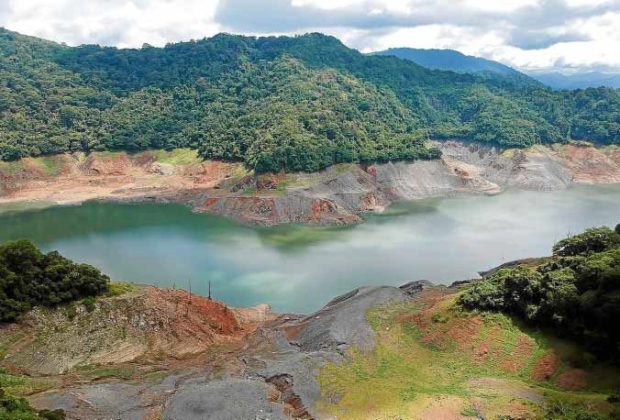Angat water level continues to drop at onset of El Niño

Angat Dam. (File photo by GRIG C. MONTEGRANDE / Philippine Daily Inquirer)
MANILA, Philippines — Despite heavy rains over the past few days, the water level at Angat Dam is slowly dropping to its minimum operating level, raising concerns over supply, especially with the onset of the El Niño phenomenon.
An official of the National Water Resources Board (NWRB) said the water level at the dam in Norzagaray, Bulacan, was 181.22 meters on Wednesday.
It has been inching closer to the 180-meter minimum operating level because the recent rainfall did not reach the watershed, according to NWRB executive director Sevillo David Jr.
“Once the water level is lower than 180 meters, the priority will be to ensure there is enough water supply in Metro Manila, rather than for other uses like irrigation and power generation,” David said during a briefing on Wednesday.
The last time the Angat water level breached the critical level of 160 meters was in June 2019.
The NWRB drew attention to the situation at Angat a day after the Philippine Atmospheric, Geophysical and Astronomical Services Administration (Pagasa) issued on Tuesday its first El Niño advisory in recent years, warning that the dry spells brought on by the phenomenon may last until early next year.
That same day, the World Meteorological Organization said the El Niño weather pattern emerged in the tropical Pacific for the first time in seven years.
Water coming from Angat — estimated at 4,000 million liters per day — flows to the La Mesa and Ipo dams to help deliver supply to Metro Manila and nearby provinces through water concessionaires Maynilad Water Services Inc. and Manila Water Co. Inc.
Adjusted allocation
Both Maynilad and the Metropolitan Waterworks and Sewerage System (MWSS) have been clamoring for additional allocations coming from Angat to ensure adequate supply in Luzon.
On June 28, however, the NWRB announced that it would cut the allocation coming from Angat from 52 cubic meters per second to 50 CMS for the month of July, citing the need to conserve supply in the dam in preparation for El Niño.
The MWSS normally draws only 48 CMS from Angat, but the dry season has prompted calls for more allocation.
David warned that the declining supply coming from Angat may also affect the operation of hydroelectric power plants.
“Once water level in Angat Dam continues to decline, other dams will have lower capacity to generate power, especially if there is less supply released for irrigation,” he said, adding that the power-hungry Luzon grid would be mainly affected.
Despite these concerns, David assured the public that the NWRB was reviewing preparatory measures with the MWSS in the event of a water supply shortage.
Both agencies are also discussing how water treatment facilities could be better utilized for additional supply, he said.